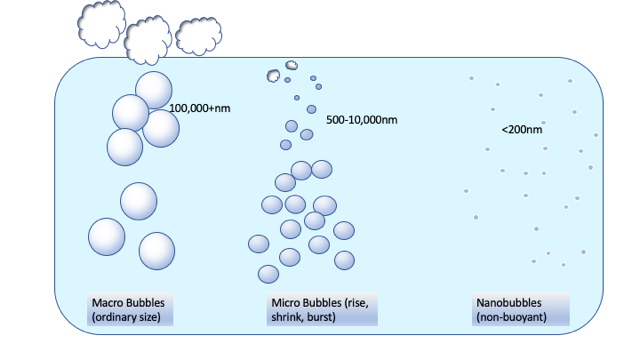Ultrafine bubbles are very tiny bubbles that are formed when gas is sheared into a water stream. The bubbles are less than 200 nanometers in size (about 500 times smaller than the smallest bubble rising from the bottom of a frosty mug of beer or 400 times smaller than a human hair) and can’t be seen by the human eye. The International Standards Organization (ISO) has defined ultrafine bubbles under the standard – ISO 20480-1:2017 (another term, nanobubbles, is not recognized as an international standard and therefore, not included in our system descriptions). These small bubbles have no buoyancy, allowing them to remain in the water column and fully infuse it with oxygen from top to bottom.
We can generate ultrafine bubbles from air, oxygen, nitrogen and carbon dioxide. This allows us to customize treatment of water in industry, agricultural, oil & gas production and other applications. Our exclusive fabrication partner, Rapid Water Technologies, manufactures our ultrafine bubble processing equipment in Grand Rapids, MI, USA.

How Are Ultrafine Bubbles Different from Other Bubbles?
Typical bubbles formed by fountains and aerators are called Macrobubbles and they are quite large in water. They coalesce and rapidly float to the surface, releasing their gas into the atmosphere. Much of the oxygen trapped in Macrobubbles is lost immediately after formation and they don’t contribute much oxygen to the water.
Microbubbles are at least 100X smaller than Macrobubbles and they typically burst under the surface as they get smaller when they rise. Again, they float to the surface and some of their oxygen is lost.
Ultrafine bubbles are less than 200 nm in size and non-buoyant. They move only by Brownian Motion—allowing them to stay in solution for a very long time—contributing their oxygen to the water column from top to bottom.